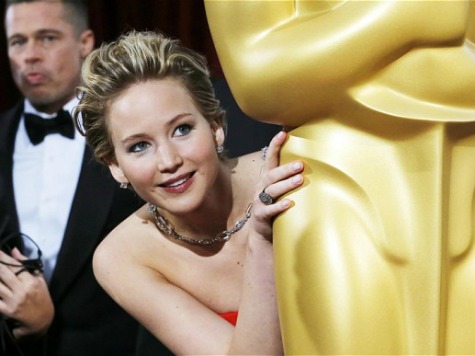Watching the 86th annual Academy Awards from the red carpet was a real eye-opener.
The sun miraculously came out on cue at precisely 2 p.m. (EST) as the stars started parading down the red carpet. Before that moment, three days of rain, alternating between torrential and sprinkles, had dampened Hollywood, if not its spirits.
The red carpet parade that followed was a symphony of players, such as stately Sidney Poitier, wisdom seemingly oozing out of every pore; gorgeous Kerry Washington; coolly beautiful Lady Gaga; and lovely soon-to-be Best Actress Oscar winner Cate Blanchett in her stunning Armani Prive gown.

Then there was Matthew McConaughey’s refreshing speech at the awards ceremony acknowledging God’s starring role in his life, making possible his Best Actor Oscar win for his role as Ron Woodruff in Dallas Buyers Club and Lupita Nyong’o’s gracious, elegant speech–as strong a performance as her role as Patsy in 12 Years a Slave for which she won the Best Supporting Actress Oscar.
Yet, for all the splendid moments, it’s clear why The Hollywood Reporter rated the whole affair a “long, boring, self-involved show.”
The obsession over what designers the starlets were wearing as they sashayed past, was another telling sign. Reporters’ desperate shouts to find out “what designer?”–as opposed to focusing a little deeper–gave greater resonance to what Gerald Molen, producer of the Oscar-winning Schindler’s List (1994), told me: “The Oscars, he said, are ‘a night of joy and despair, frivolity and angst. I only wish we could get as many people interested in the truth about Benghazi as about who is wearing what and the results of ‘and the winner is…’
Then, too, the seeming obliviousness to the legends of Hollywood, who made possible this night, was perplexing; then again, not so much. The egos are big, after all, and, like Washington, there’s only so much room for so many egos.
The “Hollywood” sign that appeared in 1923 in the hills overlooking Hollywood, initially as “Hollywoodland,” reflects this reality. As narrator Christopher Plummer said in TCM’s landmark documentary, Moguls and Movie Stars: A History of Hollywood: it “became an accidental symbol of the movie capital and one of the world’s most recognized landmarks.”
It was also a catalyst for creation of the Academy of Motion Picture Arts and Sciences, host of the “Oscars,” on May 11, 1927. Concern over unions, looming on the horizon, given growing discontent among writers, directors and actors over “salaries and creative control,” was another spur.
Louis B. Mayer envisioned Hollywood working best if the industry’s five segments–directors, producers, actors, writers and technical specialists–were integrated, enabling it to head off problems more efficiently. That was the role of AMPAS. Or, as Scott Eyman, reported in his book, Lion of Hollywood: The Life and Legend of Louis B. Mayer (2005), Mayer, stripping away the lofty pretense, said, “I found the best way to handle (filmmakers) was to hang medals over them.”
The Academy finally got around to hanging those medals for the first time on May 16, 1929 at a private dinner in the Blossom Room of The Hollywood Roosevelt Hotel–just across the street from Dolby Theater, present-day site of the Oscars.
No one but the 270 invited guests heard the live ceremony that honored the best pictures for 1927 and 1928 and those involved in their making. It lasted just 15 minutes. But, there was no radio broadcast feed of the ceremony, making it the only time the Academy Awards did not include a large broadcast audience–this year reaching 43.7 million, a 14-year high. And there was no surprise at this first Oscars ceremony since the winners were announced three months prior.
Perhaps the biggest surprise was the banning of the maverick director of Wings, William Wellman, from the ceremony.
Ellen DeGeneres, 2014 Oscars host, did her best to fill the shoes of her predecessors, including Bob Hope, who hosted the Oscars 19 times, starting in 1940; Jack Lemmon, 4 times, starting in 1964; Johnny Carson, 5 times, starting in 1979; Billy Crystal, 9 times, starting in 1990; and Whoopi Goldberg, 4 times, starting in 1994.
Yet, something was missing–and is still missing.
Maybe this year, taking Molen’s cue, Hollywood will actually tackle the truth of Benghazi. Two films are in the works–one for HBO; one for Paramount.
If ever there was a story that reveals the human spirit, this one is it. But, I won’t count on it, given Hollywood’s frequent distaste for confronting uncomfortable truths–witness the initial reticence to take the veil off the Nazis in World War II–even if these truths will set us free, one more time, one more year.
(Photo credit/Cate Blanchett walking the red carpet: Mary Claire Kendall)

COMMENTS
Please let us know if you're having issues with commenting.